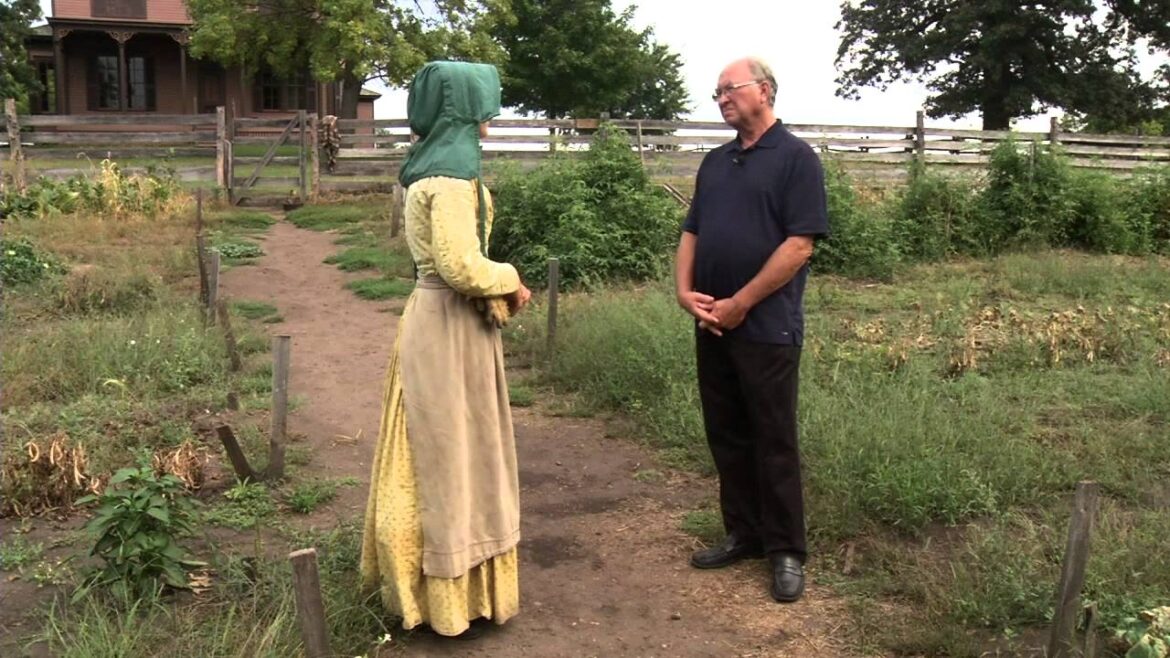The Oliver Kelley Farm, located on the bluffs of the Mississippi River near Elk River, is an interpretive historical site that features an operational mid-1800 farmstead. One feature of the farm is a historic garden where pioneer women and children raised vegetables for the family. Host Larry Zilliox visits with Andrea Krist, a site interpreter from the Minnesota Historical Society, who educates guests on the raising and preserving of vegetables in the 1850s.
Connect with us on Facebook: http://www.facebook.com/pioneerpublictv
For more information about Pioneer Public TV, including how you can become a member, go to http://www.pioneer.org. Additional Pioneer productions can also be viewed online at http://video.pioneer.org.


27 Comments
Interesting!
Nice dodge of the botulism question. Subtle.
Watching in 2020. There is no way that any farmer, from any time period, would have that much grass and weeds in their garden. People in the 1800s plowed, tilled, and kept all the grass and weeds hoed out, right?! And I'm pretty sure mulching and composting have been around for even longer. 🤔
Cool. Lots of information and facts I didn't know. Like you can leave parsnips in the ground through winter. Hmmm. Ms. Krist is well-spoken, knowledgeable and her enthusiasm is contagious. Good upload. Thanks. 🤔 LL
Very knowledgeable gal. Well done.
All of the recording & editing for this great segment, just to misspell the interpreter's name? How does this continue to happen in the 21st century.
Why would plants be spaced so far apart?
Shalom Hills
And women should still be covered!!
Why is there so much long grass all over the place – is that deliberate? Did they not compost and put down dung in those days and make field free of grass and weeds? Or did they leave grass to stop the sand blowing away? I did not really get that!?
It may be wise to relearn these skills. I like women who are modesty dressed. Today’s girls with tight leggings and yoga pants???…how the times have changed. I love are modern day conveniences but augmenting with gardens and some self sustainment at your home is healthy I believe. Jim from Ohio.
P.S. yes I planted a garden this year and live near the Amish. I learn from them. Have you ever dug up potatoes? That you planted? And Smell the earthy goodness? If not your missing out.
I want to go back in time. Smart woman.
Mom cooks bean "in the dough stage" taste good
Parsnips fried in butter. Nuty flavor. Now that sounds good. With white wine. The ability to be content with something simple, Wholesome. Those where the days.
wow. she is so knowledgeable and so comfortable with here knowledge. wow
I had to shell beans as a kid! I used to hate it but now I am glad for the experience.
Imagine only owning one or two or three outfits, in today's world if you have too much money you're a failure if you're seen in the same outfit more than one time. Some of the rich people don't even wear socks and t-shirts but one time…TRUE FACT.
Very interesting since I am also in Minnesota. I have been very, very curious about what was grown here by my Scandinavian immigrant family.
Interesting side note. Many Amish call peppers, particularly green bell peppers, mangos. I have always wondered why. It was more a process of stuffing the peppers and mangos. Somehow they switched the word pepper for mango?
Thank you for this video. Very interesting.
She is so natural and sweet!
If you let the zucchini grow big to it's full potential, they do get mature seeds, a thicker skin, and last several months in a cool well ventilated location, and away from rodents, as rodents get into the squashes for their seeds. Maybe on top of a wire shelf is a good place. Pumkins too can last several months, away from heating, in a likewise well ventilated and cool location.🎃🎃🎃🎃
Thank you!
fermented (pickled) vegetables are coming back, as now SCIENCE has come to recognize the benefit of the probiotics to the health of people. I think its something that isn't mentioned. Also the winter squashes are also FODDER plants of many prairie farmers. "Cow squash" was a major winter food for livestock and was stored in the hay loft. Also modern ""catsup" also has vinegar, but few recognize that. People just don't realize the food production in it original forms.
Women dressed back then like they still should.Decently,modest.
This is fantastic! Having a facility such as this is definitely a goal of mine.
The German Templars would construct houses elevated a half level above ground and a half level below ground to be used as a cellar.
The interesting and smart thing is that the floor and walls of the cellar didn't meet at 90 degrees but were rounded off so as to prevent spilled grain getting caught in the corners attracting vermin.
Thanks…I loved this one.
Very interesting. Watching from the Uk before work 🙂